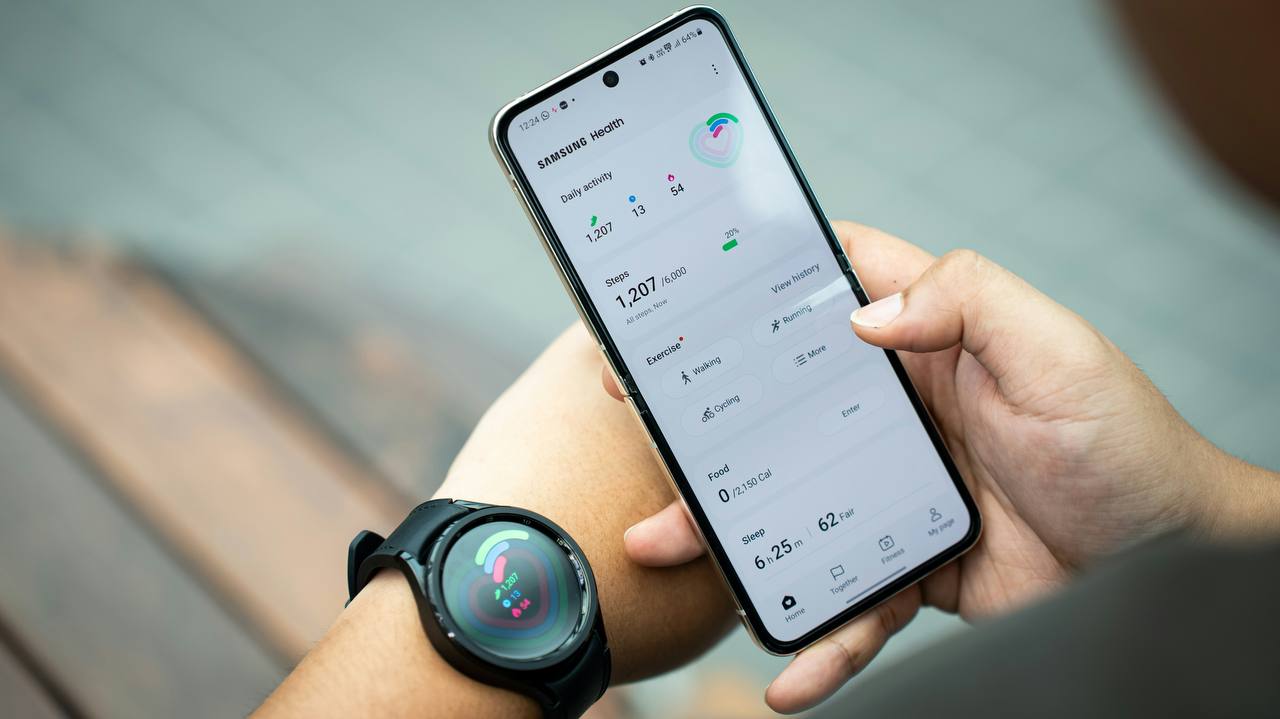
Digital health is rapidly evolving into a strategic frontier, and Big Tech is following in its footsteps. As health data becomes the currency of next-generation care, the ability to unify, analyze, and act on that information in real time becomes crucial for any health organization. From insurers to health platforms and device makers, everyone is looking for scalable, intelligent solutions to make sense of fragmented health signals.
And their call is finally heard. At the beginning of 2025, Samsung announced its Health Hub: a unified platform to connect data from wearables, clinical systems, and home-based sensors, offering real-time access to patient metrics. This follows similar efforts from Apple, Google, and Amazon, each racing to become the backbone of the digital health ecosystem. Their shared goal is clear—own the infrastructure, shape the future of care.
Today we explore what these developments mean for health platforms. This blog post focuses on how Big Tech is shaping data architecture, why interoperability is the new standard, and what tools your platform needs to stay competitive in a data-driven healthcare market.
Big Tech isn't entering healthcare to deliver medical services. They're building foundational platforms for data exchange and decision-making. These digital health ecosystems are designed to:
Samsung’s Health Hub, similar to Apple HealthKit and Google Health Connect, is not just another health app. It’s positioned to become the default layer through which health data flows. Once integrated into provider workflows and consumer experiences, it benefits from a powerful network effect: more users lead to better data, which drives smarter insights and increases platform utility.
For developers, providers, and payors building on top of this infrastructure, the expectations have shifted. Interoperability, intelligent data syncing, and real-time feedback loops are now baseline requirements, not optional add-ons.
As platforms like Samsung Health Hub gain traction, we are witnessing a foundational shift in how healthcare is delivered. Data-centric care delivery models are replacing traditional episodic treatment with ongoing, dynamic interventions. These models make health data the central element in the patient-provider relationship, enabling clinicians and digital health platforms to create personalized care pathways and guide decisions in real time. By moving data from the margins to the core of care, these platforms unlock powerful opportunities for predictive analytics and precision medicine.
This shift is not hypothetical; it’s already disrupting reimbursement frameworks, restructuring clinical workflows, and setting new benchmarks in chronic care management and population health outcomes. Platforms not designed to leverage real-time insights risk becoming obsolete.
In a world increasingly dominated by platform ecosystems, interoperability is no longer just a technical feature—it’s a strategic imperative. Health platforms must not only integrate seamlessly with Apple, Samsung, and Google, but also ensure that their data is structured, secure, and available in real time across systems.
Companies that fail to align with these standards risk being locked out of critical distribution channels or worse, falling behind on innovation cycles altogether. Building interoperable solutions helps ensure your offering can scale across geographies, devices, and use cases.
Previously, we have already covered what preventive care is. Today, the concept has expanded dramatically. No longer confined to annual checkups or screenings, prevention now demands constant monitoring, analysis, and early intervention, powered by real-time data streams. As health ecosystems become more sophisticated, predictive prevention is quickly becoming the foundation of modern care delivery.
Digital health platforms are now expected to operate in a proactive rather than reactive manner. We have talked about that in our predictive analysis blog post. Using real-time data from wearables, medical sensors, and mobile apps, these platforms can identify patterns and potential risks before they escalate. This new paradigm empowers care teams to shift from episodic intervention to continuous support, fundamentally transforming how care is delivered and measured.
As Big Tech scales the digital health infrastructure, smaller health platforms and insurers must critically evaluate their technical readiness and long-term positioning.
For chronic care apps, digital insurers, and remote monitoring providers, this is both a technical challenge and a market opportunity. You don’t need to replicate Big Tech’s infrastructure, but you do need to align with it. The true value lies in how you transform raw data into proactive care, personalized interventions, and improved outcomes. That differentiation starts with an infrastructure that’s ready to integrate, scale, and adapt.
Big Tech is redefining the rules of digital health. But with the right tools, your platform can do more than keep up; it can lead in personalization, prevention, and patient experience.
Thryve helps digital health platforms remain competitive in a rapidly evolving landscape dominated by Big Tech. Our real-time API is designed to simplify the complexities of health data integration and analytics, empowering platforms to focus on delivering differentiated, patient-centered solutions. Instead of building and maintaining costly infrastructure for wearable data ingestion, real-time streaming, and compliance, Thryve offers a plug-and-play foundation tailored to the needs of modern care. We offer:
While Big Tech builds general-purpose health hubs, Thryve empowers you to apply that data meaningfully, turning metrics into decisions, and users into outcomes.
Book a demo to see how Thryve can help you integrate, innovate, and scale.